随着组织从联网设备、传感器和机器中生成更多数据,
边缘计算已成为节省带宽、时间和资金的关键策略。边缘计算将信息处理移至更接近数据生成源的位置——在本地对数据进行过滤、分析并采取行动,而非将每个数据点都发送至云端。这种方法显著减少了网络流量,降低了云端和连接成本,并实现了更快速的实时决策。
边缘计算(亦称边缘处理)是指在网络边缘——即靠近被监控或控制的物理设备、资产或系统的区域——执行数据处理的实践。通过将对延迟敏感且数据量庞大的信息保留在边缘端,企业能够提升运营效率、增强可靠性,并对关键事件作出即时响应——而无需完全依赖集中式数据中心或云基础设施。
跳转至:
边缘计算是一个功能强大的概念,现在才刚刚开始大展拳脚。许多组织甚至不知道自己需要边缘计算。他们只是想解决挑战,无论他们是否熟悉这个概念,边缘计算都是答案。让我们来谈谈其中的三个关键驱动因素。
#1:管理不需要查看的数据
第一个驱动因素是管理IoT 的实施,在这种情况下,需要在边缘收集大量数据。传输所有这些数据的带宽可能有限,或者由于成本问题或蜂窝数据计划的使用上限,企业希望节约使用带宽。而这些数据中的大部分实际上是可以忽略的。
平均而言,大多数监控数据往往是标准的 "心跳 "数据,即基本表示 "我在运行 "的信息。边缘设备每次被编程唤醒和报告时,通常都会发送相同的信息。边缘计算设备可以通过一些制衡措施,自动区分不变的 "心跳 "数据和需要关注的异常数据。因此,它可以最大限度地减少需要蜂窝连接的数据量。如果需要更多细节,您可以轻松申请状态。否则,就不会传输心跳数据。
#2:流程自动化
利用边缘计算解决方案,智能边缘设备可以做出决策并采取行动。例如,在一个部署中,边缘设备正在监控一个不断被水泵注入的水箱,该设备可以确定水箱是否已满,水泵是否正常工作。当水达到一定高度时,边缘设备可以关闭水泵,然后报告水位。
本地输入的信息,无论是一个输入还是 100 个输入,都能提供决定应采取何种行动的智能。这些输入信息可能是油箱液位、温度或电压读数等,这些信息表明电池电量正在变低,在这种情况下,边缘设备可以打开发电机以保持电力运行,直到电池被更换。网络边缘的智能设备能够启动进程并打开或关闭其他设备。值得注意的是,开关、继电器和执行器是不同的机制,但在边缘环境中都具有相同的基本用途。
远程指挥中心通常有一定的覆盖能力。但在理想情况下,设备能够在不需要远程系统发送命令的情况下采取行动。这就是边缘计算的魅力所在--工作人员可以继续执行重要任务,没有人需要跳上服务车开往远程站点。它自己就能搞定。
#3:在边缘获得可见性
第三个驱动因素是需要了解设备和流程的状态以及整个网络的重要事件。无论您的边缘设备是在监测霜冻情况、土壤条件、天气模式还是其他重要数据,系统管理员都需要一目了然的信息,以及需要干预的重要通知。
这样的例子有很多,但我们最喜欢的例子之一是 维克公司是一家为重型建筑项目的混凝土养护提供传感器的公司。使用方法 Digi Connect 传感器 和 Digi Remote Manager®Wake 提供了一套完整的监控解决方案,可将成百上千次混凝土浇筑过程中出现的任何关键问题通知项目经理。如果混凝土需要进行温度补救,团队可以收到通知并迅速采用升温或降温策略,以确保混凝土正常固化并符合规范要求。
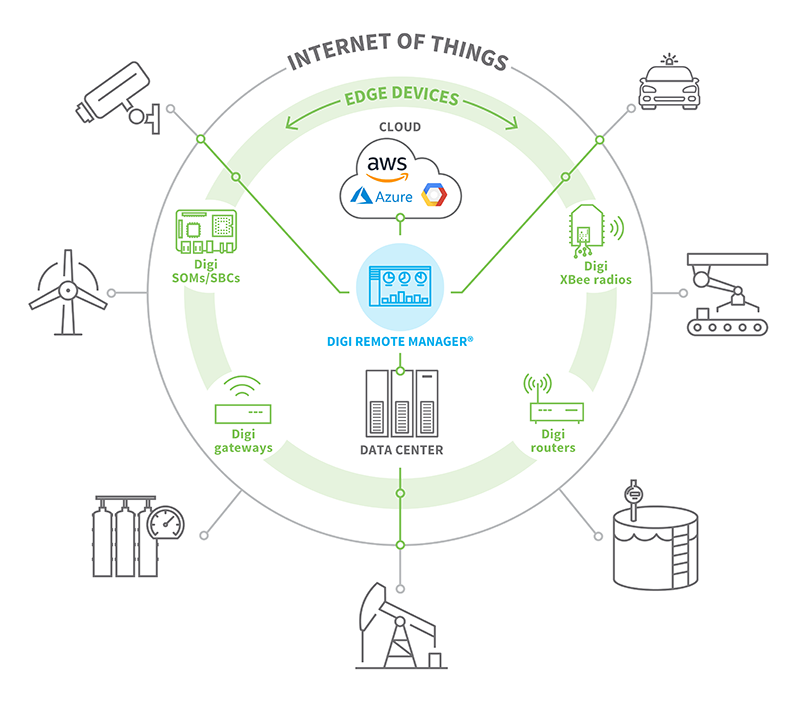
正如我们所指出的,管理油田、太阳能或风能发电场或大型建筑工地等大范围的部署需要特别的考虑。要派人检查每一个设施,确保流程和设备始终正常运行,不仅成本高昂,而且几乎不可能。边缘计算是使这些大型IoT 部署具有成本效益的关键能力。
还有一些真正的关键任务用例,如果没有边缘计算近乎实时的响应能力进行即时干预,机械或设备可能会遭受严重破坏,或导致环境灾难。
例如,连接到边缘设备的湿度传感器可以快速启动一个程序,关闭电源以保护易受洪水侵袭地区的电气设备。另一个例子是在野火频发地区运营的电力公司。公用事业公司正在采用边缘计算解决方案来关闭变压器,以降低火灾风险。在这样的情况下,部署边缘计算解决方案相对较低的成本很容易被潜在的设备损失和由此造成的业务中断所抵消。
可利用边缘计算节省时间、金钱和带宽的应用场景
边缘计算的应用领域非常广泛,尤其是在工业IoT(IIoT) 领域,该领域的部署规模可能很大,部署范围很广,而且面临的条件各不相同,可能需要采取行动。
我们已提及若干应用场景。现在让我们看看边缘计算在各行业中的常见应用,这些领域对时间、资金和带宽的优化至关重要。
石油和天然气
在石油和天然气环境中,具有边缘计算功能的设备可以监控阈值、在线压力、温度和流速。这样做的目的是检测或防止石油或天然气泄漏。泄漏是该行业的一个大问题,无论是出于安全和环境原因,还是可能的罚款和补救成本。例如,如果连接到燃气表的边缘计算设备检测到流量高于正常值,它就可以自动关闭燃气管线,并可能防止爆炸,这比工作人员响应警报的速度更快。
灌溉和景观维护
在景观浇灌系统中,您可以使用边缘计算智能,在打开洒水器之前自动检查雨量计或土壤湿度传感器。边缘设备甚至可以连接到国家气象局,这样,如果某天下雨的几率达到 70%,或者天气太冷,有结冰的危险,边缘设备就可以关闭洒水器。生产商用浇灌系统和提供商用草坪管理服务的公司目前正在增加温度和湿度监测功能,尤其是在高尔夫球场等高用水量应用领域和美国西南部长期干旱地区。
风能和太阳能发电场
如今,许多绿色技术应用,如风能、太阳能、水能,甚至垃圾和回收系统,都支持IoT 。传感器、无线电和网关可收集和传输有关各种条件的数据,然后启动程序。例如,这些程序可以包括调整太阳能电池板的角度,或在极端风力条件下关闭风力涡轮机。

楼宇自动化
边缘计算广泛应用于智能建筑领域,例如电梯和暖通空调系统。电梯配备边缘计算设备,当轿厢内乘客增多时,可自动重新校准并调整承载能力。在预测性维护方面,边缘计算同样发挥着重要作用——当检测到潜在问题(如电机高阻抗运行,可能预示电机开始老化)时,系统能自动生成维护工单。 通过检测并解决问题来避免业务中断,同时减少维护人员的时间和开支,每年可为企业节省巨额成本。
许多办公楼在暖通空调系统中采用边缘计算技术,根据人员在场与否动态调节供暖制冷。其智能照明控制系统配备传感器,可自动调节光照强度,甚至能开合窗帘以充分利用自然光或减少夏季热量增益。虽然这些系统支持远程管理,但若能在边缘端实现无人干预的自主管理,将更为便捷高效,从而显著提升成本效益。
随着时间的推移,类似的边缘计算系统可以为楼宇业主节省大量成本。具有边缘计算功能的楼宇自动化系统也是 "绿色科技"的典范。它们可以实现节能最佳实践,帮助楼宇业主的物业获得能源与环境设计先锋(LEED)认证。反过来,LEED 认证也可以成为向希望提高环保意识的潜在租户进行营销时的竞争优势。
制造自动化
边缘计算在制造自动化场景中应用广泛,例如装配线中,每台机器人或机器都配备独立的人工智能(AI)系统,自主运行并向记录服务器发送数据。当检测到某些条件不符合规格,或需要采取措施确保设备平稳安全运行时,边缘计算能即时响应。 设备故障、质量偏差及安全事件可被即时检测并处理——无需承受云端处理的延迟。这种更快的响应速度能最大限度减少计划外停机时间,提升生产效率,同时有效保护设备与人员安全。
自动化系统从PLC、传感器、机器人和视觉系统中持续生成数据流。边缘计算在工厂车间本地处理这些数据,无需将每个数据点传输至云端。通过在边缘端过滤和分析数据,制造商能大幅降低带宽使用量,避免不必要的数据传输成本。
如今,人工智能、机器学习和计算机视觉系统正越来越多地与边缘计算结合使用。当您使用边缘计算解决方案来监控一组水平或阈值时,机器学习使您能够随着时间的推移对其进行完善和调整。边缘计算与机器学习的结合可以显著提高生产质量和一致性。
从成本角度来看,边缘计算通过减少云存储需求、降低网络依赖性并实现预测性维护以避免代价高昂的故障,从而降低了运营和基础设施支出。其结果是打造出更高效、更具韧性且可扩展的制造运营体系,在带宽、时间和总拥有成本方面均能实现可量化的节省。
查看更多跨垂直领域的边缘计算实例。
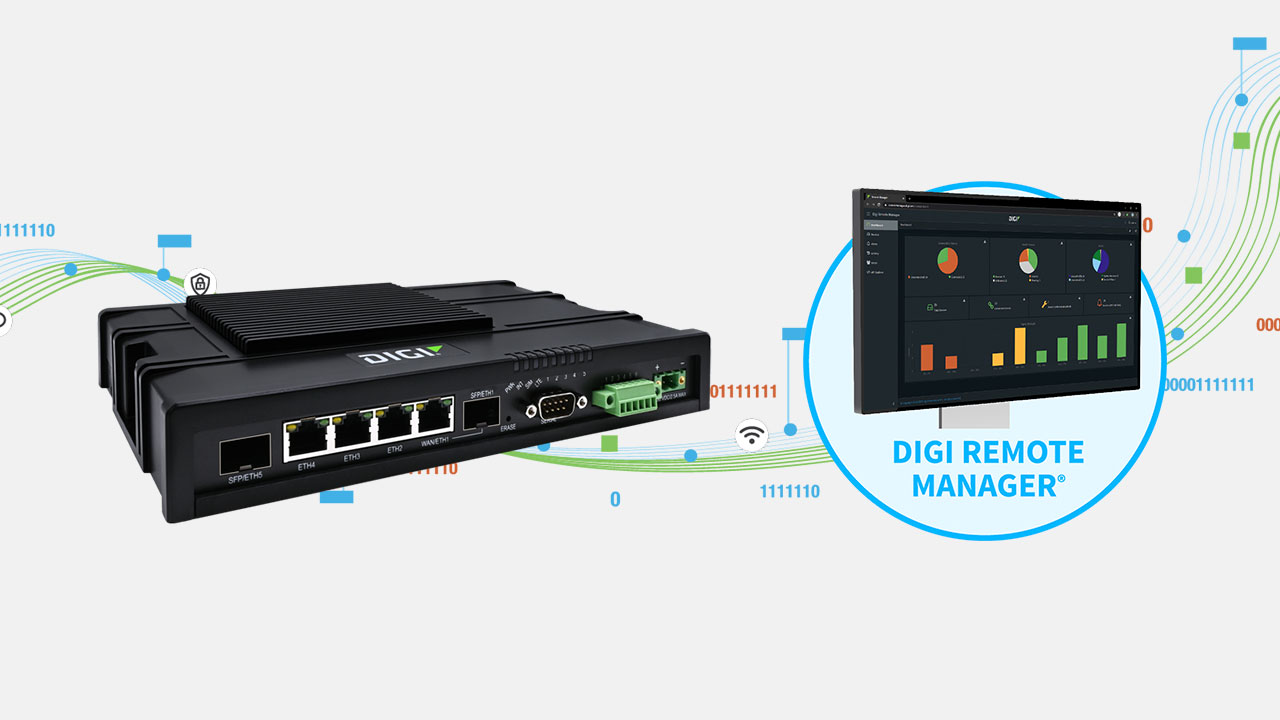 Digi 提供完整的蜂窝解决方案,满足您在工业领域的边缘计算需求,例如 Digi IX20, Digi IX30和 Digi IX40 将远程设备监控和管理与 Digi 远程管理器 - 分布式网络的指挥中心。
Digi 提供完整的蜂窝解决方案,满足您在工业领域的边缘计算需求,例如 Digi IX20, Digi IX30和 Digi IX40 将远程设备监控和管理与 Digi 远程管理器 - 分布式网络的指挥中心。
其中,Digi IX40 是一款工业 5G 边缘计算工业IoT 路由器解决方案,旨在支持工业 4.0 应用中工业资产数据的快速处理、分析和集成。这款功能强大的解决方案支持从预测性维护和资产监控到机器学习和先进机器人技术等广泛应用所需的 5G 连接和边缘智能。
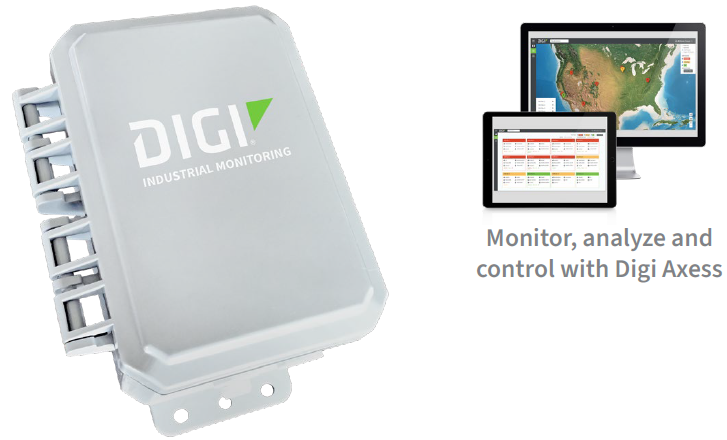 Digi Connect® 传感器 XRT-M 是我们具有边缘计算能力的领先解决方案之一。Connect Sensor+ 可以定期读取传感器读数,并且能够采取行动,例如,如果达到预定义的阈值水平,它可以操作开关来关闭油气管线。
Digi Connect® 传感器 XRT-M 是我们具有边缘计算能力的领先解决方案之一。Connect Sensor+ 可以定期读取传感器读数,并且能够采取行动,例如,如果达到预定义的阈值水平,它可以操作开关来关闭油气管线。
Digi Connect Sensor XRT-M 与所有 IX(工业)系列 Digi 蜂窝路由器一样,具有警报和触发功能,因此经常被用于边缘环境。许多客户之所以选择 IX 路由器,特别是因为它们是工业级产品,能够承受许多户外工业环境中的极端温度和湿度条件。
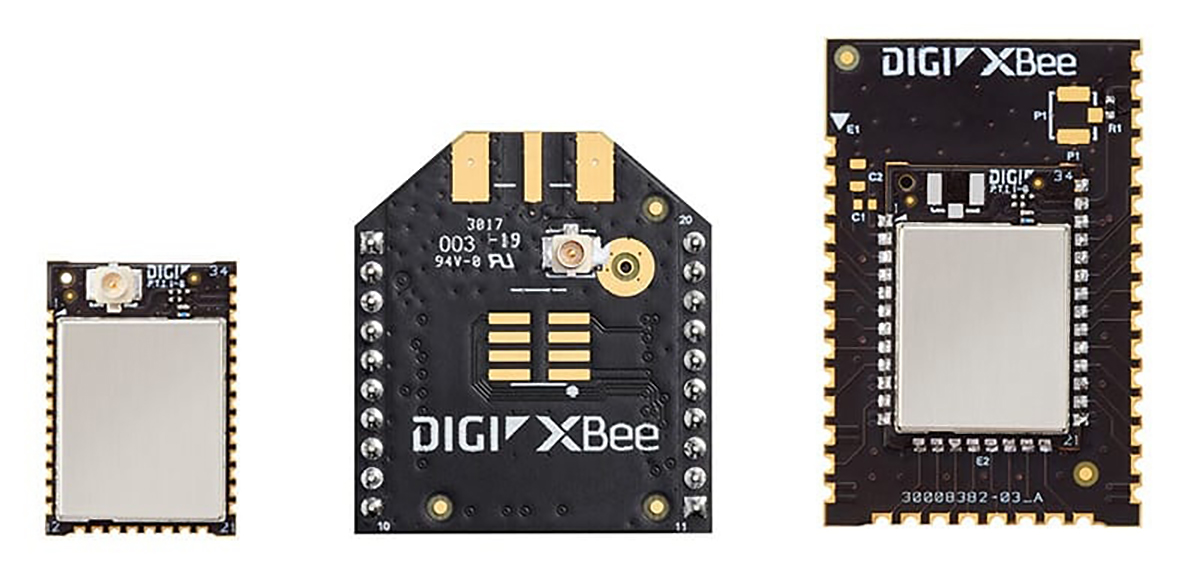 如果您正在设计和制造IoT 产品,Digi 也能为您提供全套嵌入式解决方案。 Digi XBee® 设备,如 Digi XBee 3 个蜂窝调制解调器它集成了 MicroPython,可通过编程在边缘执行各种功能。
如果您正在设计和制造IoT 产品,Digi 也能为您提供全套嵌入式解决方案。 Digi XBee® 设备,如 Digi XBee 3 个蜂窝调制解调器它集成了 MicroPython,可通过编程在边缘执行各种功能。
这些设备可以定期唤醒并读取数据,或要求传感器提供某些特定的数据值,然后进入睡眠模式。Digi XBee 与 Digi 的IoT 网关连接的射频模块也可以启动类似的操作。
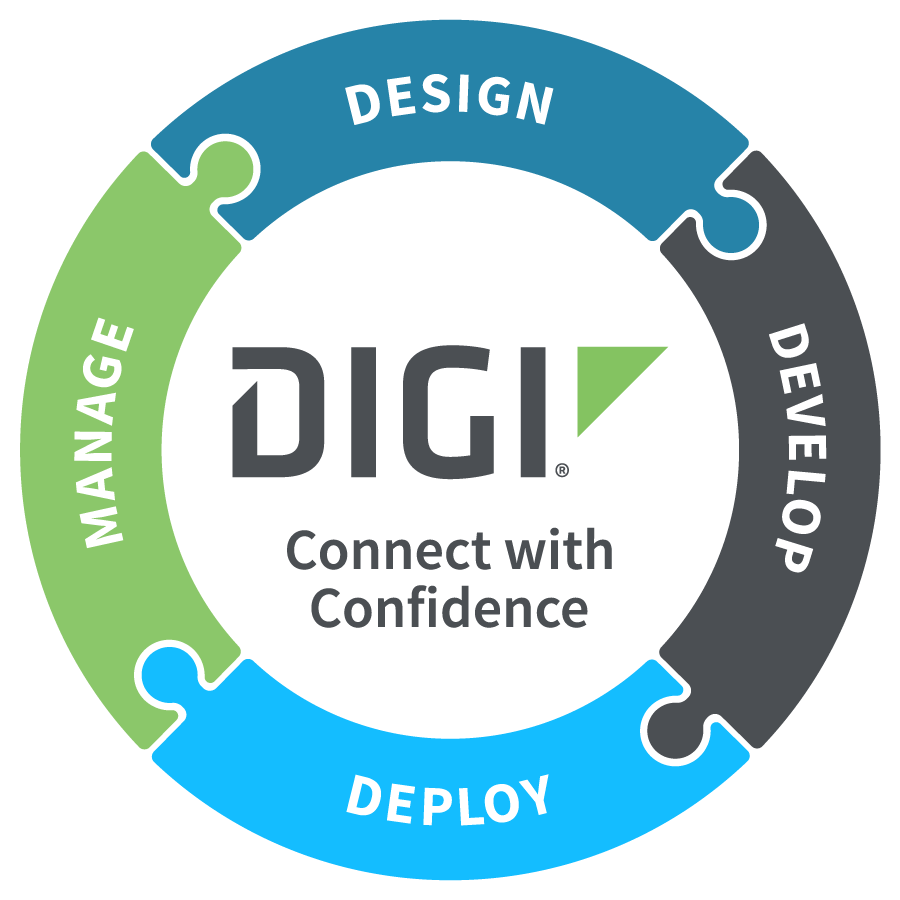
此外,Digi ConnectCore® 系统模块为智能边缘设备的开发提供了一个完整的 OEM 平台。这个完整的生态系统包括用于原型开发和测试的开发人员套件、基于集成操作环境的 SOM 解决方案、用于快速开发和快速上市的开发人员工具套件,以及用于远程监控终端设备和持续安全管理的增值服务 -Digi ConnectCore 云服务和Digi ConnectCore 安全服务。
请参阅我们的边缘计算技术页面,以及我们关于边缘计算系列的博客文章合集:
边缘计算如何降低带宽使用量?
通过在本地处理数据,仅将相关或关键信息发送至云端,边缘计算大幅减少了网络传输的数据量。这有效缓解了网络拥塞,降低了数据套餐费用——对于带宽有限或成本高昂的大型IoT 而言尤为关键。
边缘计算在哪些方面能节省时间?
边缘计算通过在边缘端分析数据并采取行动,实现实时或近实时决策。相较于纯云端处理,这能显著降低延迟(即数据生成与响应之间的间隔),从而加快操作速度并提升响应能力。
边缘计算如何在工业运营中节省时间并提升响应能力?
在本地处理决策可消除将数据发送到远端云端并等待响应的往返延迟。在需要快速响应的应用场景中——例如关闭泵、检测异常读数或控制设备——边缘计算方法能够实现近乎实时的响应。
边缘计算如何帮助组织节省成本?
采用边缘计算技术的组织可通过以下方式节省成本:
- 降低数据传输成本:减少发送的兆字节数,降低蜂窝/广域网使用费
- 减少现场服务或实地考察次数,因为本地自动化系统可在无人干预的情况下自主运行。
- 避免因数据处理缓慢导致响应延迟或系统故障而造成的业务损失。
- 通过实现早期检测和本地控制,提高设备运行时间并降低停机成本
哪些类型的应用或使用场景最能受益于边缘计算的效率优势?
一些能充分体现边缘计算效率提升优势的典型应用场景包括:
- 远程安装(油气、太阳能/风力发电场)——在这些场景中,网络连接受限且延迟至关重要
- 监控系统中,海量传感器数据流在转发前需要进行压缩处理
- 智能基础设施(例如:楼宇自动化、照明系统、暖通空调系统)通过本地控制实现节能降本
企业在规划边缘计算部署时应考虑哪些因素?
关键考虑因素:
- 评估哪些数据确实需要发送到云端,哪些数据可以在本地处理或应当在本地处理
- 确保所选边缘设备或网关具备足够的处理能力、内存和I/O资源以处理本地分析任务。
- 规划连接性和网络条件——当链路受限、间歇性或成本高昂时,边缘计算能提供帮助
- 确保分布式设备的远程管理、安全性(固件更新、身份验证)及生命周期支持
- 为部署设定明确的衡量标准:带宽成本节约、响应时间提升、现场访问次数减少
边缘计算如何提高可靠性?
由于边缘系统在本地处理数据,即使云端连接受限或中断,它们仍能持续运行。这提高了可靠性并减少了停机时间——尤其在远程或分布式环境中。
边缘计算是否仅IoT ?
虽然IoT 场景(如传感器监测和自动化控制)是边缘计算的主要受益者,但任何需要快速处理、减少数据传输和高效网络利用的应用——例如智能建筑、工业自动化和视频分析——都能从中获益。
下一步工作
注:本文最初发布于2021年5月,于2024年5月进行修订,并于2025年11月再次修订。